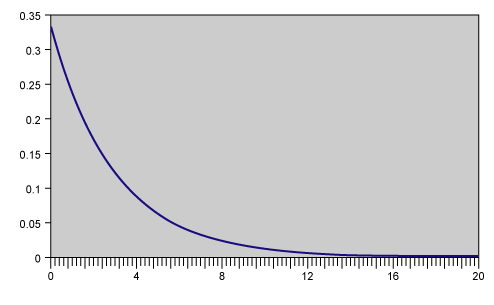
(2014) established inverse moment bounds for sample autocovariance matrices based on a detrended time series. (2014) discussed the asymptotic approximation of an inverse moment for nonnegative random variables. Ye and Yang (2013) proposed a new method for dimension reduction in regression using the first two inverse moments. (2010) obtained some exponential inequalities for a negatively orthant dependent sequence and used the exponential inequalities to study the asymptotic approximation of an inverse moment for negatively orthant dependent random variables.

Monte Carlo simulations were conducted to compare the performances. Inverse moment and modified inverse moment estimators were derived. Gui (2015) studied the problem of estimating unknown shape and scale parameters of exponentiated half logistic distribution. The precisions of MLEs and IMEs are compared through numerical simulations. They proposed the inverse moment estimators of the parameters of the generalized exponential distribution. Gu and Yue (2013) considered the problem of estimating parameters of the generalized exponential distribution based on a complete sample. The simulation results showed that the mean square errors of the inverse moment estimators are less than the maximum likelihood estimates (MLE)’s. Wang (2004) obtained the inverse moment estimators and the interval estimation based on type II progressively censored data under the Weibull distribution. Let the population moments of the quasi-sample equal the sample moments and solve the unknown parameters. The population moments of the new sample do not dependent on unknown parameters while the sample moments do. Different from the regular method of moments, the idea of the inverse moment estimation (IME) is as follows.įor a sample X 1, …, X n from a distribution with unknown parameters, first transform the original sample to a quasi-sample Y 1, …, Y n, where Y i contains the unknown parameters but its distribution does not depend on unknown parameters, that is, Y i is a pivot variable, i = 1, …, n. The inverse estimation method was originally proposed by Wang (1992) and was applied to study parameter estimation for Weibull distribution. Keywords : inverse moment estimators, maximum likelihood estimates, existence and uniqueness, joint confidence regions, small sample size, Weibull distribution, inverted exponential Pareto distribution, Monte Carlo simulation Its performance is followed by inverse moment estimator and maximum likelihood estimator, especially for small sample sizes. As far as the biases and mean squared errors are concerned, modified inverse moment estimator works the best in all cases considered for estimating the unknown parameters. Monte Carlo simulations are conducted to compare the performances of these estimators.

Inverse moment and modified inverse moment estimators are proposed and their properties are studied. A necessary and sufficient condition for the existence and uniqueness of maximum-likelihood estimates of the parameters is obtained for the classical maximum likelihood estimation. The estimation of unknown parameters is considered.

#Method of moments estimator for exponential distribution how to
We use a specific model to demonstrate its principle and how to apply this method in practice. In this survey, we present a modified inverse moment estimation of parameters and its applications.


 0 kommentar(er)
0 kommentar(er)
